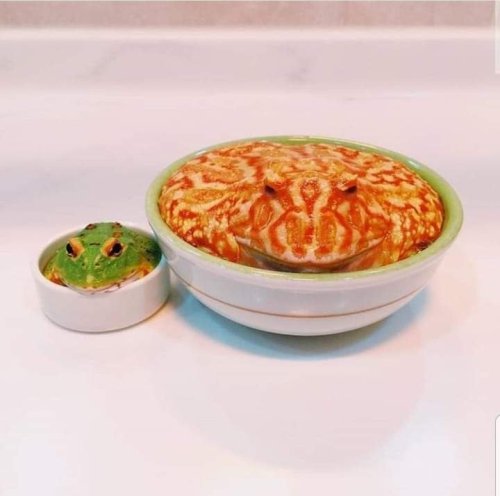I'm In On The Calendar Project!🥳

I'm in on the calendar project!🥳
I'm in charge of August!🏕
More Posts from Linmhd and Others
Creative Writing lesson Masterpost
Want to learn how to write creatively? Here are some free lessons and courses to help improve your writing. Note that all resources listed below are online, free to use and require no payment or credit card.
Be warned that many of these links are aimed at people at the university / college level.
General Creative Writing:
Open University: Start writing fiction [Full length]
Creative Writing Course [ Full Length]
MITOpenCourseware - Writing and Reading Short stories [Full Length]
MIT - Genre FIction [Full Length]
Coursera - Writing for young readers [ Full length]
Coursera - Creative writing (plot) [Full Length]
Coursera - Creative writing (Style) [Full Length]
Coursera - Creative writing (Setting& Description) [Full Length]
Coursera - Creative Writing (Characters) [Full Length]
Coursera - Capstone: Your Story [Full Length]
Alison - English Writing Skills [Full Length]
edX - How to write a novel[Full Length]
Coursera - Poetry Workshop [Full Length]
Coursera - Script Writing: Write a Pilot episode for a TV [Full Length]
Itunes: Creative Writing Masterclass [Audio]
Writing tutorial Playlist [Video playlist]
How to write fiction stories [Video]
Developing voice or style [Video]
How to write a story that rocks [Video series]
Mystery and crime:
Mystery Writing tips [Video]
Crime writing workshop Robin Masserman [Long Video]
Fantasy & Scifi:
Fantasy and Scifi writing course [Full length]
MIT - Modern Science fiction [Full Length]
MIT - Writing science fiction [Full Length]
Comedy:
Ted-Ed- How to make your writing funnier [Video]
Chuck Roy - The Reverse [Video]
Chuck Roy - How to Write a Joke (double entendre) WARNING: Adult content [Video]
Go ahead, Make me laugh [ebook]
Misc & Resources:
Gotham writing questionnaire [Form]
Marcel Proust Character Questionnaire [Form]
Freelance Writing [Ebooks]
Warm up writing tips [Video]
Key:
[ Full Length] = Long course with sections, sometimes free university courses.
[Ebook] = Free Ebook to read online or download.
[Form] = Form to fill out to help you
[Video] = A short video
[Audio] = Audio based learning
Girls when they need to buy eggs from the store

I want to get to college I don’t wanna be a disappointment to my family, please I wanna do good i dont want to be a failure please let just have this one chance



* Papyrus joins the team! The power of cute babybones fills you with... drip.
Part 1
A comparison of a male Pacman Frog, left, and a female, right. Or perhaps a bowl of spaghetti hoops with guacamole?

so excited to watch myself grow into an even more confident, sexy, inspiring, kind, successful and overall amazing woman
DO ATOMS DECAY OVER TIME??
Blog# 196
Saturday, May 28th, 2022
Welcome back,
Although life on Earth may seem rather stable and unchanging—the tide goes in and out, the Sun rises and sets, and the months bleed on the same as always—in the grand scheme of things, our universe is actually a rather dynamic place.
Everyday, millions of stars are born and die, and in the end, the same thing will happen to our own Sun.
A few billion years from now, as our star begins to transition into a red giant, temperatures on our world will increase, and life will be extinguished. Just a few billion years after that, once the Sun exhausts its supply of material to sustain nuclear fusion, it will begin its death throes. When this happens, it will cast off its outer layers and, eventually, fade into darkness.
Nothing in our universe is eternal…or is it?

Atoms are the building blocks of matter. They, quite literally, make our universe what it is. When we die, our bodies do not turn into nothing; rather, they are broken down into their constituent parts and recycled into the ecosystem. In short, our atoms go on long after we are gone.
But just how long can atoms last? Will they eventually be broken down into…nothing?
To answer this question, you need to understand a little bit about how atoms work. As you may know, atoms contain protons and neutrons, and they are surrounded by a “shell” of electrons. The number of electrons that are found in the cloud are equal to the number of protons. This helps create stability.

Ultimately, the number of protons is what determines the atomic number. For example, helium has two protons, so its atomic number is two (and it appears second on the periodic table of elements). The number of neutrons that are found in an atom are generally consistent, but not always. And if an atom doesn’t have the “correct” number of neutrons, sometimes, the atom may lose a neutron (kind of like how you lose a sock in the wash). When this happen, the atom becomes unstable and, in an attempt to become a stable atom, it shoots off subatomic particles. Most often, the atom will shoot off an electron.]
This is how atoms breakdown.
Anytime that you have a heavy atom, there is some risk that it will spontaneously start to break down into smaller particles. This is known as “radioactive decay.” This is just a very basic breakdown. Please see the link for more on radioactive decay.

To return to the point at hand, unfortunately, this is a stochastic process (which means that it has “a random probability distribution, or pattern that may be analyzed statistically, but may not be predicted precisely”). In other words, we can’t pinpoint exactly when a breakdown will occur - when a subatomic particle will be shot off; however, since we can analyze the pattern, we can determine how many atoms will decay over an average time, which is called the “half-life,” and it is a very reliable estimate.
Since an atom has a finite number of protons and neutrons, it will generally emit particles until it gets to a point where its half-life is so long, it is effectively stable. For example, Bismuth-209 is believed to have the longest decay rate. It undergoes something known as “alpha decay,” and it’s half-life is over a billion times longer than the current estimated age of the universe.
Originally published on futurism.com
COMING UP!!
(Wednesday, June 1st, 2022)
“IS THERE ANYTHING BEYOND THE UNIVERSE??”
-
 ihavenoiivefr0 liked this · 4 weeks ago
ihavenoiivefr0 liked this · 4 weeks ago -
 snakesight9898 liked this · 1 month ago
snakesight9898 liked this · 1 month ago -
 amirke-48 liked this · 1 month ago
amirke-48 liked this · 1 month ago -
 mrcwannbnch liked this · 1 month ago
mrcwannbnch liked this · 1 month ago -
 auriganee liked this · 1 month ago
auriganee liked this · 1 month ago -
 justcallastra liked this · 1 month ago
justcallastra liked this · 1 month ago -
 yzzieeye liked this · 1 month ago
yzzieeye liked this · 1 month ago -
 nnnntt414 liked this · 2 months ago
nnnntt414 liked this · 2 months ago -
 01mitsuna liked this · 2 months ago
01mitsuna liked this · 2 months ago -
 scarletstarlight liked this · 2 months ago
scarletstarlight liked this · 2 months ago -
 key liked this · 2 months ago
key liked this · 2 months ago -
 eclecticdreamerwobblerhound liked this · 2 months ago
eclecticdreamerwobblerhound liked this · 2 months ago -
 superbcroissantwombatdeputy liked this · 2 months ago
superbcroissantwombatdeputy liked this · 2 months ago -
 orangpintar125 liked this · 2 months ago
orangpintar125 liked this · 2 months ago -
 143mewo liked this · 3 months ago
143mewo liked this · 3 months ago -
 snowhite1200-blog liked this · 3 months ago
snowhite1200-blog liked this · 3 months ago -
 firefly-factory liked this · 3 months ago
firefly-factory liked this · 3 months ago -
 sharlmbracta liked this · 3 months ago
sharlmbracta liked this · 3 months ago -
 sharlmbracta reblogged this · 3 months ago
sharlmbracta reblogged this · 3 months ago -
 katydid-katydoes liked this · 4 months ago
katydid-katydoes liked this · 4 months ago -
 stripesj liked this · 5 months ago
stripesj liked this · 5 months ago -
 generic-piggy-or-something liked this · 5 months ago
generic-piggy-or-something liked this · 5 months ago -
 castielangel liked this · 5 months ago
castielangel liked this · 5 months ago -
 triohamadasibs78 liked this · 5 months ago
triohamadasibs78 liked this · 5 months ago -
 hudo-jnik liked this · 5 months ago
hudo-jnik liked this · 5 months ago -
 rafflic liked this · 5 months ago
rafflic liked this · 5 months ago -
 perflads liked this · 6 months ago
perflads liked this · 6 months ago -
 awa-the-skeleton liked this · 6 months ago
awa-the-skeleton liked this · 6 months ago -
 auroradeappel liked this · 6 months ago
auroradeappel liked this · 6 months ago -
 franklolboss98 liked this · 6 months ago
franklolboss98 liked this · 6 months ago -
 niangaogiao liked this · 6 months ago
niangaogiao liked this · 6 months ago -
 toketh liked this · 6 months ago
toketh liked this · 6 months ago -
 yepuka liked this · 6 months ago
yepuka liked this · 6 months ago -
 glitchmel liked this · 7 months ago
glitchmel liked this · 7 months ago -
 boxedinstars liked this · 7 months ago
boxedinstars liked this · 7 months ago -
 celestiakatani liked this · 7 months ago
celestiakatani liked this · 7 months ago -
 squiditty liked this · 7 months ago
squiditty liked this · 7 months ago -
 helena-hexmaniac liked this · 8 months ago
helena-hexmaniac liked this · 8 months ago -
 thecathasninelives liked this · 8 months ago
thecathasninelives liked this · 8 months ago -
 lunightfarewelloficial liked this · 8 months ago
lunightfarewelloficial liked this · 8 months ago -
 supernovalunaris reblogged this · 9 months ago
supernovalunaris reblogged this · 9 months ago -
 oneeqaisara liked this · 9 months ago
oneeqaisara liked this · 9 months ago -
 walkingescapism liked this · 9 months ago
walkingescapism liked this · 9 months ago -
 burningwax8 liked this · 9 months ago
burningwax8 liked this · 9 months ago -
 katimuxx liked this · 9 months ago
katimuxx liked this · 9 months ago -
 dasleepyfer liked this · 9 months ago
dasleepyfer liked this · 9 months ago -
 farceurcole liked this · 10 months ago
farceurcole liked this · 10 months ago -
 redxinc liked this · 10 months ago
redxinc liked this · 10 months ago -
 fozziefox liked this · 10 months ago
fozziefox liked this · 10 months ago -
 verhouska08 liked this · 10 months ago
verhouska08 liked this · 10 months ago
